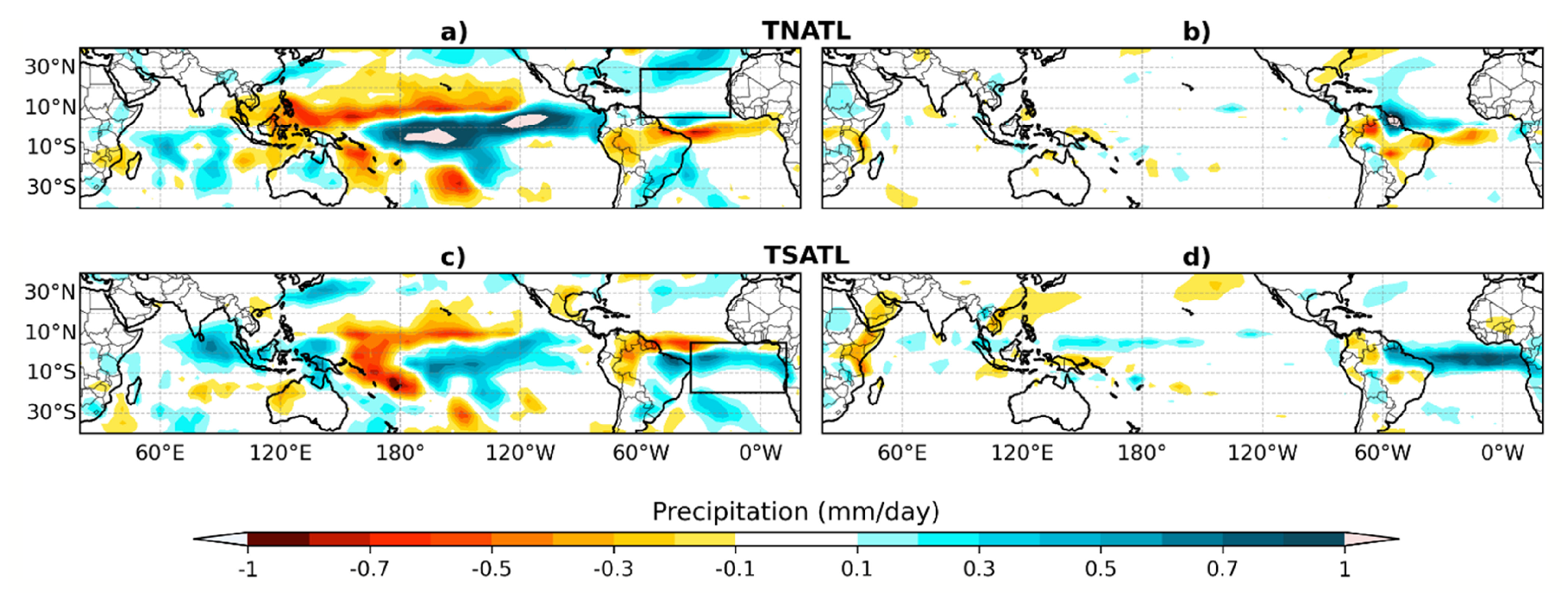The DREAM simple GCM was used in this study to investigate the typical response of February to April (FMA) rainfall over Northeast Brazil to frequently observed patterns in Sea Surface Temperature (SST). Typical SSTA anomaly patterns considered included two types of El Niño; La Niña and the tropical North and South Atlantic. Each anomaly pattern was introduced into the GCM to make ensemble seasonal forecasts.
The model responses correspond quite well to observed precipitation regressions against SSTA timeseries: dry for El Niño and warm North Atlantic, wet for La Niña and warm South Atlantic. Experiments with reversed SSTAs show that model nonlinearity has a drying effect over northeastern South America.
Complimentary experiments with a dry purely dynamical version of DREAM reveal that interactive moist thermodynamics is crucial for accurately representing continental rainfall responses, even over short timescales.

More details in this paper:
- Hounsou-Gbo, Aubains, Nicholas M.J. Hall, Leticia Cardoso, Francisco das Chagas Vasconcelos Junior and Eduardo Martins, 2024: Simple GCM simulations of rainfall over Northeast Brazil, Part 1: Systematic effect of canonical Sea Surface Temperature patterns. Int. J.Climatol, http://doi.org/10.1002/joc.8746.


